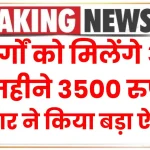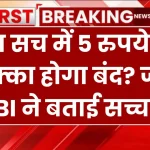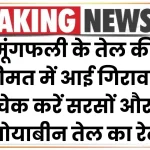
In a surprising move that directly impacts millions of bank customers, HDFC Bank and ICICI Bank, two of India’s biggest private sector lenders, have reduced the interest rates on savings accounts. This decision, announced in mid-April 2025, follows the RBI’s recent repo rate cut, and it’s already sparking concern among savers looking for steady returns on their idle funds.
If you have a savings account with either of these banks, your returns on deposited money will now be lower than before. This article will help you understand why this happened, what the new rates are, and most importantly—what alternatives you can consider to get better returns in 2025.
HDFC & ICICI Cut Savings Interest Rates
| Particulars | Details |
|---|---|
| Banks Involved | HDFC Bank and ICICI Bank |
| Old Savings Rate (up to ₹50 lakh) | 3.00% p.a. |
| New Savings Rate (up to ₹50 lakh) | 2.75% p.a. |
| Old Rate (above ₹50 lakh) | 3.50% p.a. |
| New Rate (above ₹50 lakh) | 3.25% p.a. |
| Effective From | April 2025 |
| Reason for Cut | Follows RBI repo rate cut of 25 bps on April 5, 2025 |
| Official Link | HDFC Bank Website |
The April 2025 interest rate cuts by HDFC and ICICI are a wake-up call for savers. With returns from savings accounts now dipping below 3%, it’s more important than ever to review where you park your money. Whether it’s liquid mutual funds, FDs, or post office schemes, there are safer and smarter options that can help you beat inflation.
Why Did These Banks Reduce Savings Account Interest Rates?
The recent cuts by HDFC Bank and ICICI Bank come shortly after the Reserve Bank of India (RBI) reduced the repo rate by 25 basis points (bps) to 6.00%. The repo rate is the interest rate at which commercial banks borrow money from the RBI. When the repo rate is lowered, borrowing becomes cheaper for banks, but it also signals a downward shift in deposit rates.
RBI’s Strategy Behind the Move
The RBI is aiming to stimulate economic growth amid signs of slowing consumption and private investment. Lower interest rates encourage spending and borrowing but make it less attractive for banks to offer high interest on deposits.
By cutting savings account rates, banks reduce their cost of funds, thereby protecting their net interest margins (NIMs)—a critical profitability metric.
see also: SBI Reduces FD Interest Rates Amid Repo Rate Cut: What It Means for You
What Are the New Savings Account Interest Rates in April 2025?
Let’s break down how your savings might be affected if you’re a customer of HDFC or ICICI.
HDFC Bank Savings Interest Rates
- Up to ₹50 lakh balance – Reduced from 3.00% to 2.75%
- Above ₹50 lakh – Reduced from 3.50% to 3.25%
ICICI Bank Savings Interest Rates
- Up to ₹50 lakh – Down to 2.75%
- Above ₹50 lakh – Down to 3.25%
How Will This Affect You as a Customer?
Let’s say you had ₹1,00,000 in your HDFC savings account, earning 3% per annum. You were getting about ₹250/month in interest. With the revised 2.75% rate, that monthly interest drops to around ₹229.
Over a year, that’s nearly ₹250 less in returns—this is more significant for higher balances.
What Are Your Alternatives to Earn Better Returns in 2025?
You don’t have to settle for low returns. Here are safe, practical, and higher-yielding alternatives to parking your money in low-interest savings accounts:
1. Liquid Mutual Funds
- Expected Returns: 4.5%–6.5%
- Risk Level: Low
- Liquidity: High (withdraw within 24 hours)
- These are ideal for emergency funds and short-term savings. You can start with as little as ₹500.
2. Fixed Deposits (FDs)
- Returns: 6.5%–7.5% depending on the bank and tenure
- Safety: Very high if parked in large banks or post office schemes
- Consider small finance banks too—they offer FD rates as high as 8.25%.
3. Sweep-in FD Accounts
- These link your savings account to an FD.
- When your balance crosses a threshold, excess money is automatically transferred to a high-interest FD.
- You get liquidity + FD-level returns.
4. Post Office Monthly Income Scheme (POMIS)
- Interest Rate: 7.4% p.a. (as of April 2025)
- Minimum Investment: ₹1,000
- Tenure: 5 years
- Payout: Monthly
Great for retirees or conservative savers.
Why Aren’t More Banks Offering Higher Savings Interest?
The truth is, savings accounts are not designed for high returns. They are meant for easy access and daily transactions. Most large banks invest in efficiency and stability, not in offering aggressive rates. That’s why:
- Smaller banks and fintechs may offer up to 6–7%, but come with lower trust ratings or T&Cs.
- Major banks like HDFC, ICICI, SBI offer lower rates but high convenience, ATM networks, and digital services.
Expert Tips to Maximize Returns in 2025
Here’s how professionals recommend managing idle cash:
- Keep 1–2 months’ worth of expenses in your savings account.
- Move surplus funds to liquid funds, FDs, or POMIS depending on your need.
- Review interest rates quarterly and don’t hesitate to switch to better-performing options.
see also: Know the New FD Rates of HDFC, ICICI, and SBI
HDFC & ICICI Cut Savings Interest Rates FAQs
Q1. Why did HDFC and ICICI reduce savings interest rates in April 2025?
These banks followed the RBI’s repo rate cut of 25 bps. To maintain profitability and reduce cost of funds, banks adjust deposit rates accordingly.
Q2. Are my funds still safe in these banks?
Yes, both HDFC and ICICI are highly trusted and regulated by the RBI. Deposits up to ₹5 lakh are also insured under DICGC.
Q3. Should I close my savings account and shift to smaller banks offering higher rates?
Only if you are comfortable with the risk. Smaller banks may offer higher rates, but often lack digital infrastructure and may have stricter conditions.
Q4. What is the best short-term option if I don’t want to keep money in savings?
Liquid mutual funds or sweep-in FDs are great for short-term use without compromising liquidity.
Q5. How often do banks revise savings account interest rates?
There is no fixed schedule. Banks adjust rates based on RBI policy changes, liquidity, and internal funding needs.











